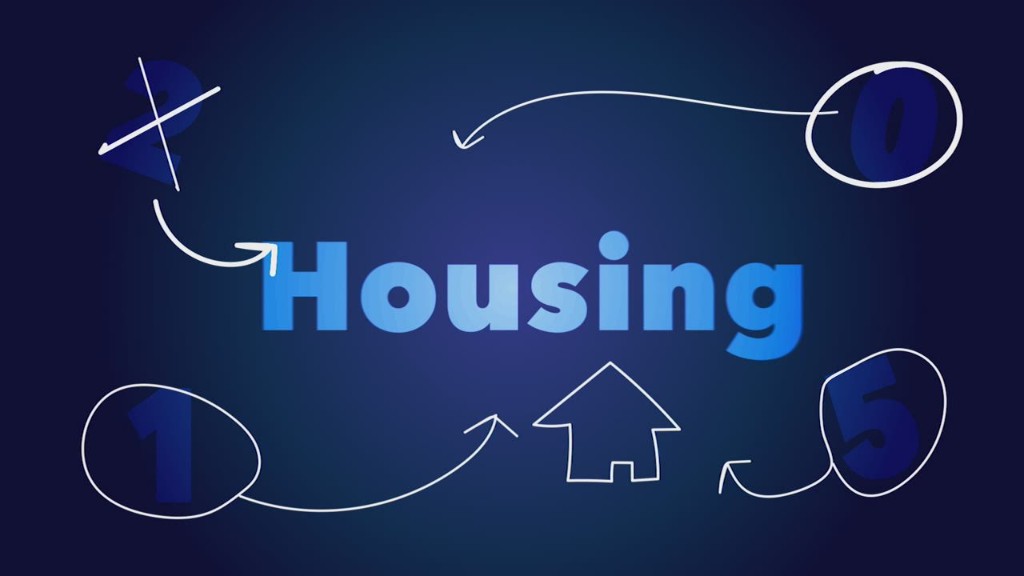
Ian Boyd started to think about buying a home in his late 20s, as he and his friends completed graduate school, coupled up, and started to think about children.
During that time in 2009, Boyd knew that purchasing a home would pose a financial challenge. He had about $35,000 in student debt and another $5,000 on credit cards. Plus, he made only about $34,000 a year as an academic adviser at a community college in Vermont. In other words, his debts exceeded his income.
"I remember going to the bank to see about getting a mortgage and hoping for the best. I left deflated," he says.
The bank approved him for a mortgage of $50,000 -- a sum that does not go far enough in Burlington, the college town where Boyd lives. There, the median sale price of a home is $265,000, according to real-estate website Trulia.
Through a co-worker, Boyd learned about Champlain Housing Trust, a nonprofit that offers financial education and innovative housing programs geared toward low- and middle-income people. Now, six years later, Boyd owns a four-bedroom, two-bath fully renovated home with an apple tree and a backyard.
"I feel a connection to this city that I didn't feel when I was renting," he says. "I could see expanding my family here."
Related: Is ending segregation key to ending poverty?
Boyd went from debtor to homeowner in just three years -- from 2009 to 2012-- thanks to an innovative homeownership plan called the shared-equity program. It works like this: Champlain Housing Trust offers a down payment for a home, paid for with government funds. Then CHT screens potential buyers, who are members of the trust, based on their assets and income. (To qualify, a family of four must earn $80,200 or less in gross annual income, they must not own another home, and they must not have significant assets outside of savings for retirement.)
The homeowner then gets a mortgage from a bank and pays the principal each month. Usually, the homeowner also pays for the closings costs and any upkeep and maintenance. When the homeowner decides to sell the property, he first must offer it back to the housing trust. Both the homeowner and housing trust share in the home's appreciation. (That's why it's called "shared equity" -- 25% of the appreciation goes to the homeowner and 75% to CHT.) The homeowner also recoups all of the equity he built up each month through making principal payments, as well as any money he has spent on capital improvements (a figure determined by an independent appraiser).
Related: The most innovative cities in America
Housing experts like this shared-equity model, also known in housing circles as community land trusts, because "the potential is that, if it's done well, it occupies the middle rung between renting and owning," says Brett Theodos, a senior research associate at the Urban Institute, a nonpartisan think tank in Washington. "This is a market hit solution."
The shared-equity model also accomplishes two key goals for its beneficiaries and for communities. First, it helps low- and middle-income people save money by requiring mortgage payments month to month without having to worry about the down payment (often, the sticking point for first-time buyers). Second, it helps to preserve affordable housing throughout the community. Any money the housing trust earns through appreciation gets plowed back into the homes. "We use this to keep these homes permanently affordable," says Emily Higgins, director of Home Ownership for the Champlain Housing Trust.
The shared-equity model of housing came out of the civil rights movement in the South in the late 1960s, says John Emmeus Davis, a private housing consultant who works with community land trusts across the country. Activists realized that fighting for African-Americans' political and legal rights was only one step. To fully tackle racial inequality, they also needed to ensure economic independence; hence, the emphasis on homeownership among African-Americans: a policy that remains one of the best ways to encourage people to build up assets.
Related: What to do with a dying neighborhood
The first shared-equity housing program started in the rural area of Albany, Georgia, in 1967. Then, in the 1980s, activists launched the first urban iteration in Cincinnati, Ohio. Now, more than 200 nonprofits and groups work in this space.
Even the global financial recession didn't dampen housing experts' enthusiasm for the program. The rate of foreclosures among homes in shared-equity programs was 0.46% at the end of 2010, compared with 4.63% among owners of market-rate homes.
The Champlain Housing Trust currently offers about 550 homes in its portfolio. The group also places great emphasis on financial education and money management; after all, there's little benefit in buying a house if a person can't afford to hold onto it.
As for Boyd, he moved into his new home in January 2012 with the help of the Champlain Housing Trust. His house was appraised at $230,000, but he borrowed roughly $160,000 because the housing trust had already put so much money into the place. He paid $9,000 in closing costs. The monthly mortgage payment is roughly $1,150 -- just $150 more per month than he paid for a one-bedroom rental.
Related: I bought a house for $1,000
Should something go awry with his home, Boyd feels that the Champlain Housing Trust will support him. The group does not micromanage its homeowners, or their renovation or upkeep decisions, he is quick to say. But they will help if people run into trouble paying for a major outlay like a new furnace or roof. They also offer free programs for their homeowners, like tax workshops.
The ultimate goal of the Champlain Housing Trust is to ease low- and middle-class individuals into homeownership by helping them save money and, eventually, prepare them to buy a home on the open market. For now, though, Boyd plans to stay in his charming, two-story house on North Champlain Street. "I would be fortunate to live my life in this house," he says.
This article originally appeared on The Next Economy, a joint project of The Atlantic and National Journal.


